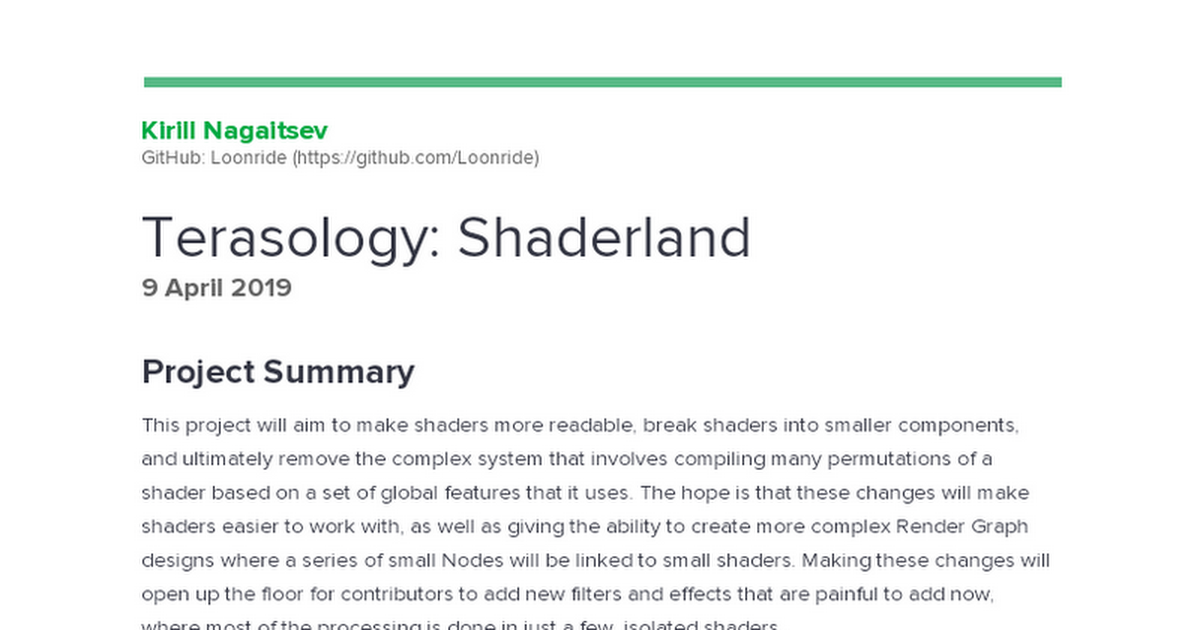Hello,
Can I please get comments and reviews on my Shaderland proposal? Thanks in advance!

 docs.google.com
docs.google.com
Can I please get comments and reviews on my Shaderland proposal? Thanks in advance!
GSoC 2019 Proposal: Terasology
Kirill Nagaitsev GitHub: Loonride (https://github.com/Loonride) Terasology: Shaderland 9 April 2019 Project Summary This project will aim to make shaders more readable, break shaders into smaller components, and ultimately remove the complex system that involves compiling many permutations of a...
